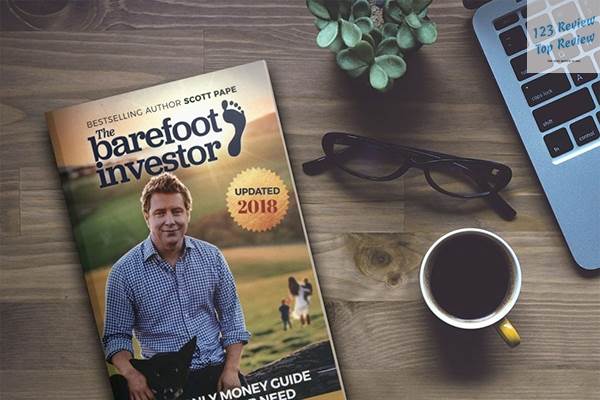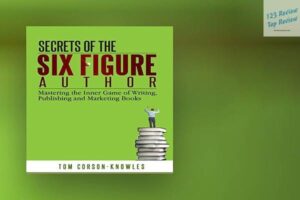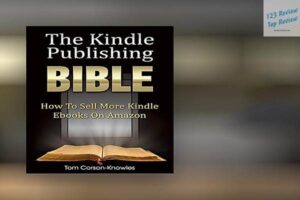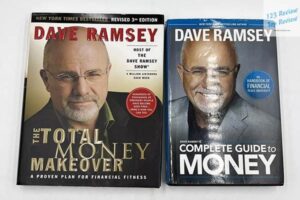Discover Pape’s practical advice on debt elimination, money management, and investment, along with his unique 3-Bucket System for budgeting. Learn how to set and achieve financial goals, automate savings, and avoid common financial pitfalls. Through real-life success stories, case studies, and a detailed look at Pape’s philosophy, this review provides valuable insights and tips for anyone looking to take control of their finances and build a secure financial future.
Key Principles of The Barefoot Investor
Debt Elimination Strategies
“The Barefoot Investor” by Scott Pape emphasizes the importance of eliminating debt as a fundamental step toward financial freedom. Pape introduces a pragmatic approach that focuses on tackling high-interest debts first, often referred to as the “debt domino” strategy. This method involves listing all debts from smallest to largest and focusing on paying off the smallest one first while making minimum payments on the others. Once the smallest debt is cleared, the money that was used to pay it off is then redirected to the next smallest debt, creating a domino effect.

Pape’s strategy also includes tips for maintaining a frugal lifestyle during this process. He encourages readers to scrutinize their spending habits and cut unnecessary expenses. For example, he suggests canceling unused subscriptions, negotiating bills, and being mindful of discretionary spending. By adopting these practices, readers can free up more money to allocate toward debt repayment, accelerating their journey to becoming debt-free.
Money Management Techniques
Effective money management is a cornerstone of Pape’s financial philosophy. He introduces the concept of “Money Date Nights,” which are regular sessions dedicated to reviewing one’s finances. These sessions are designed to be both informative and enjoyable, helping individuals or couples to stay engaged with their financial goals. During these dates, participants are encouraged to assess their spending, adjust their budgets, and discuss any financial concerns.
Another key technique Pape promotes is the use of a bucket system for budgeting. This involves dividing one’s income into different categories, or “buckets,” to ensure that money is allocated wisely. The main buckets Pape suggests are for everyday expenses, emergency savings, and long-term investments. By compartmentalizing finances in this way, readers can gain better control over their spending and savings.
Investment Guidelines
Investing is a critical aspect of building wealth, and “The Barefoot Investor” provides accessible guidelines for beginners. Pape simplifies the often complex world of investing by recommending low-cost, diversified index funds. These funds are designed to track the performance of a specific market index, offering broad market exposure at a low cost. Pape’s emphasis on index funds is based on their historical performance and their ability to provide steady, long-term growth.
He also advocates for the regular, automated investment of funds. By setting up automatic transfers to investment accounts, readers can ensure that they are consistently investing without the need for constant manual intervention. This approach not only simplifies the process but also helps to mitigate the risk of making emotional investment decisions based on market fluctuations.
Simple Steps to Financial Freedom
The 3-Bucket System
One of the most distinctive features of Pape’s financial strategy is the 3-Bucket System. This system involves dividing income into three distinct buckets: Blow, Mojo, and Grow. The Blow Bucket is for daily expenses and discretionary spending, allowing for a balance between necessity and enjoyment. The Mojo Bucket is for emergency savings, providing a financial safety net for unexpected expenses. The Grow Bucket is for long-term investments, aimed at building wealth over time.
Pape’s 3-Bucket System is designed to simplify budgeting and ensure that money is allocated effectively. By clearly defining the purpose of each bucket, readers can better manage their finances and avoid the common pitfalls of overspending or under-saving.
Automating Savings and Investments
Automation is a recurring theme in “The Barefoot Investor,” as it simplifies the process of saving and investing. Pape encourages readers to set up automatic transfers from their checking accounts to their savings and investment accounts. This strategy ensures that a portion of income is consistently directed toward financial goals, reducing the temptation to spend it impulsively.
Automating savings and investments also helps to create a disciplined financial routine. By making these processes automatic, readers can focus on other aspects of their lives without the constant worry of manually managing their finances. This approach fosters a sense of financial security and stability, as money is regularly set aside for future needs and growth.
The Importance of Financial Goals
Setting clear, achievable financial goals is essential for success, according to Pape. He advises readers to define both short-term and long-term objectives, such as saving for a vacation, purchasing a home, or retiring comfortably. These goals serve as motivational benchmarks, helping individuals stay focused and track their progress over time.
Pape suggests breaking down larger goals into smaller, manageable steps. For example, if the goal is to save for a down payment on a house, readers can start by setting a monthly savings target. This approach makes seemingly daunting goals more attainable and provides a clear roadmap for achieving them.
Real-Life Success Stories
Inspirational Testimonials
“The Barefoot Investor” is enriched with inspirational testimonials from readers who have successfully transformed their financial lives using Pape’s methods. These stories provide real-world evidence of the book’s effectiveness and offer hope to those struggling with their finances. Hearing about others’ successes can inspire readers to take action and follow Pape’s advice.
One testimonial, for instance, shares the journey of a couple who managed to pay off $50,000 in debt within two years by strictly following the 3-Bucket System and cutting unnecessary expenses. Their story illustrates the power of discipline and commitment to financial goals.
Case Studies of Financial Transformation
In addition to testimonials, the book includes detailed case studies of individuals and families who have achieved financial freedom. These case studies illustrate the practical application of Pape’s principles and demonstrate how they can be tailored to different financial situations. Readers can learn valuable lessons from these examples and apply them to their own lives.
For example, one case study features a single mother who, despite a limited income, was able to build a substantial emergency fund and start investing for her future. Her story highlights the adaptability of Pape’s strategies and their potential to make a significant impact, regardless of one’s financial starting point.
Common Mistakes and Lessons Learned
Pape also addresses common mistakes people make on their financial journeys and the lessons learned from them. By highlighting these pitfalls, he helps readers avoid similar errors and stay on track. Understanding these mistakes can be crucial for maintaining financial discipline and achieving long-term success.
Common mistakes include failing to create an emergency fund, neglecting to budget for irregular expenses, and making impulsive investment decisions. Pape provides actionable advice on how to avoid these errors, emphasizing the importance of planning, discipline, and informed decision-making.
Author’s Background and Philosophy
Scott Pape’s Journey to Financial Literacy
Scott Pape’s journey to becoming a financial guru is both inspiring and relatable. He shares his personal experiences with money, including his own financial struggles and successes. Pape’s authenticity and transparency make his advice more credible and trustworthy.
Pape’s path to financial literacy began with his early career in finance, where he observed the impact of poor money management on people’s lives. His personal experiences, including recovering from financial setbacks, shaped his understanding of practical, real-world financial strategies. This background adds depth to his advice, as it is grounded in both professional expertise and personal experience.
Perspective on Money Management
Pape’s perspective on money management is refreshingly straightforward. He believes in living a balanced life, where financial stability doesn’t mean sacrificing enjoyment. His philosophy revolves around simplicity, practicality, and sustainability, making his advice accessible to a wide audience.
Pape’s approach is centered on the idea that financial security should enhance, not hinder, one’s quality of life. He advocates for a balanced approach that allows for both responsible saving and mindful spending. This perspective helps readers see financial management as a tool for achieving a fulfilling and enjoyable life, rather than a series of restrictive measures.
Commitment to Financial Education
A key aspect of Pape’s work is his commitment to financial education. He aims to empower readers with the knowledge and tools they need to take control of their finances. Pape’s dedication to educating others is evident in the clear, actionable advice he provides throughout the book.
Pape’s commitment extends beyond the book itself, as he also offers workshops, online courses, and other resources to further support his readers. His dedication to spreading financial literacy is a testament to his belief in the transformative power of financial education.
Tips for Readers
How to Implement Advice from the Book
Implementing the advice from “The Barefoot Investor” involves taking small, manageable steps. Pape suggests starting with the basics, such as setting up the 3-Bucket System and scheduling Money Date Nights. Gradually incorporating more advanced strategies, like automated investing, can help readers build a solid financial foundation.
Pape emphasizes the importance of consistency and patience. Financial transformation is a gradual process, and readers are encouraged to stay committed to their goals, even if progress seems slow at times. By following the book’s advice step by step, readers can achieve sustainable, long-term financial success.
Recommended Resources and Tools
Pape recommends various resources and tools to support readers on their financial journey. These include budgeting apps, investment platforms, and financial planning software. By utilizing these resources, readers can streamline their financial management and stay organized.
Some of the recommended tools include:
- Budgeting Apps: Pape suggests using apps like YNAB (You Need a Budget) or Mint to track expenses and manage budgets effectively.
- Investment Platforms: For automated investing, platforms like Vanguard and Betterment are recommended for their low fees and user-friendly interfaces.
- Financial Planning Software: Tools like Quicken and Personal Capital can help with more comprehensive financial planning and tracking.
Common Pitfalls to Avoid
Avoiding common pitfalls is crucial for financial success. Pape warns against overspending, taking on unnecessary debt, and neglecting emergency savings. By being aware of these potential challenges, readers can make more informed decisions and avoid setbacks.
Overspending is a common issue that can derail financial plans. Pape advises readers to be mindful of their spending habits, especially in areas like dining out, entertainment, and impulse purchases. He also cautions against the dangers of lifestyle inflation, where increased income leads to proportionally increased spending.
Comparisons with Other Financial Guides
Unique Features of The Barefoot Investor
“The Barefoot Investor” stands out for its simplicity, practical advice, and relatable approach. Unlike many financial guides that can be overwhelming, Pape’s book is easy to understand and implement. His emphasis on automation and the 3-Bucket System are unique features that set the book apart.
Pape’s use of real-life stories and case studies also adds a unique, personal touch. These narratives make the financial principles more relatable and demonstrate their practical application. Additionally, Pape’s focus on balancing financial responsibility with enjoyment is a refreshing departure from more rigid, traditional advice.
Similarities with Other Finance Books
While “The Barefoot Investor” has its unique elements, it also shares similarities with other finance books, such as the focus on budgeting, saving, and investing. Books like “Rich Dad Poor Dad” and “Your Money or Your Life” also emphasize the importance of financial education and discipline.
Both “Rich Dad Poor Dad” by Robert Kiyosaki and “Your Money or Your Life” by Joe Dominguez and Vicki Robin advocate for taking control of one’s finances through education, strategic planning, and disciplined execution. Like Pape, these authors emphasize the importance of mindset and long-term planning in achieving financial independence.
What Sets It Apart from Traditional Finance Advice
What truly sets “The Barefoot Investor” apart is its emphasis on balance and enjoyment. Pape’s philosophy is that financial security shouldn’t come at the cost of happiness. This perspective is a refreshing departure from traditional finance advice, which often focuses solely on frugality and sacrifice.
Pape’s approachable writing style and practical tips make the book accessible to a wide audience, including those who might find traditional finance books intimidating or overly technical. His holistic approach to financial management, which considers both financial health and personal well-being, sets “The Barefoot Investor” apart in the realm of financial literature.
Reader Reception and Reviews
Overall Ratings and Feedback
“The Barefoot Investor” has received overwhelmingly positive reviews from readers. Many praise its practical, actionable advice and relatable tone. The book’s overall ratings reflect its popularity and effectiveness in helping readers improve their financial situations.
Readers frequently highlight the book’s straightforward language and clear instructions as major strengths. The step-by-step approach is particularly appreciated by those new to personal finance, as it provides a clear, manageable path to follow.
Critiques and Challenges
Despite its popularity, “The Barefoot Investor” has faced some critiques. Some readers feel that the advice is too simplistic or not applicable to their specific circumstances. However, these challenges are often outweighed by the book’s overall positive impact.
Critics argue that the book’s strategies may not be suitable for individuals with complex financial situations or higher income levels. Some also believe that the advice on investment diversification could be more detailed. Nonetheless, the book’s core principles remain widely applicable and beneficial for the majority of readers.
The Book’s Impact on Audience Behavior
The impact of “The Barefoot Investor” on its audience is significant. Many readers report improved financial habits, reduced debt, and increased savings. The book’s practical approach and relatable stories motivate readers to take control of their finances and work towards their goals.
The testimonials and success stories included in the book often serve as powerful motivators. Readers are inspired by the tangible results achieved by others and are encouraged to apply Pape’s principles in their own lives. This has led to a widespread, positive shift in financial behavior among the book’s audience.
Conclusion
Final Thoughts on Financial Management
“The Barefoot Investor” offers a comprehensive, practical guide to financial management. Scott Pape’s straightforward advice and relatable stories make the book accessible and inspiring. By following Pape’s principles, readers can achieve financial stability and freedom.
The book’s emphasis on simplicity, balance, and practical action makes it a valuable resource for anyone looking to improve their financial situation. Pape’s holistic approach ensures that readers not only manage their money effectively but also enjoy their financial journey.
Encouragement for Readers to Take Action
Taking action is the first step toward financial freedom. Pape encourages readers to start small, stay consistent, and keep their goals in sight. With dedication and perseverance, anyone can improve their financial situation.
Pape’s motivational tone and actionable steps provide readers with the confidence and tools needed to make meaningful changes. He emphasizes that financial success is achievable for everyone, regardless of their starting point.
The Legacy of The Barefoot Investor
The legacy of “The Barefoot Investor” lies in its ability to make financial education accessible to everyone. Scott Pape’s commitment to empowering readers with practical advice and tools has made a lasting impact on countless lives. The book continues to inspire and guide individuals on their journey to financial independence.
By demystifying personal finance and offering a clear, achievable path to financial security, “The Barefoot Investor” has established itself as a cornerstone of modern financial literature. Its principles and strategies will continue to benefit readers for years to come, solidifying Scott Pape’s legacy as a champion of financial literacy and empowerment.





